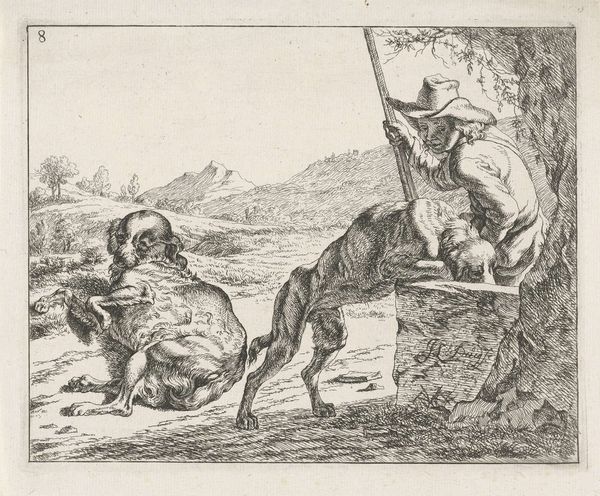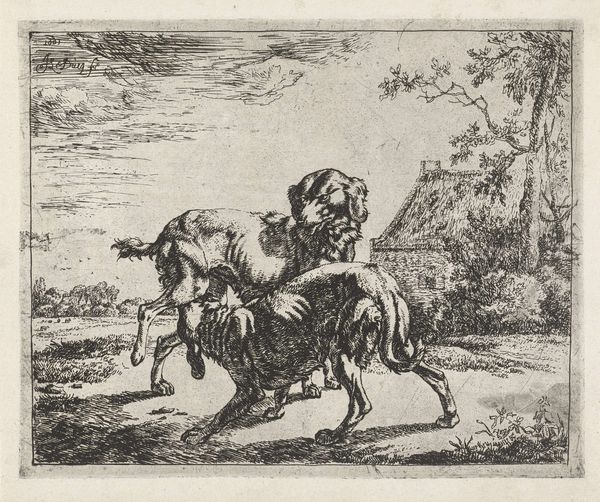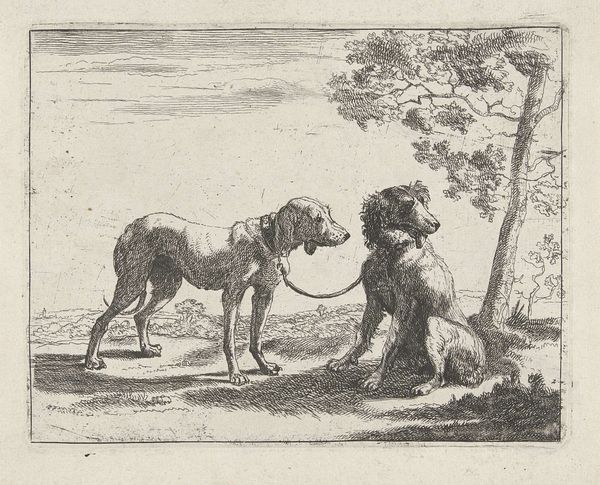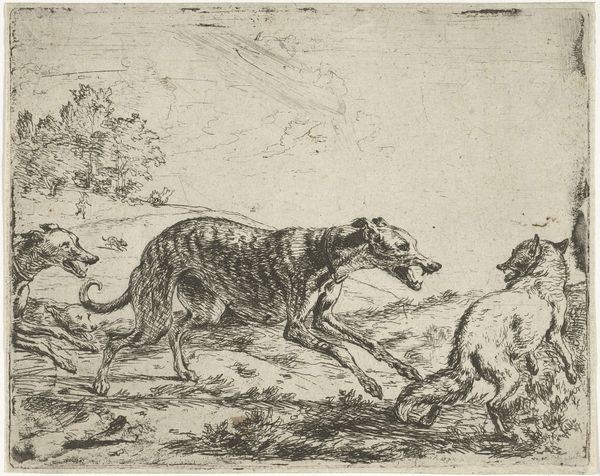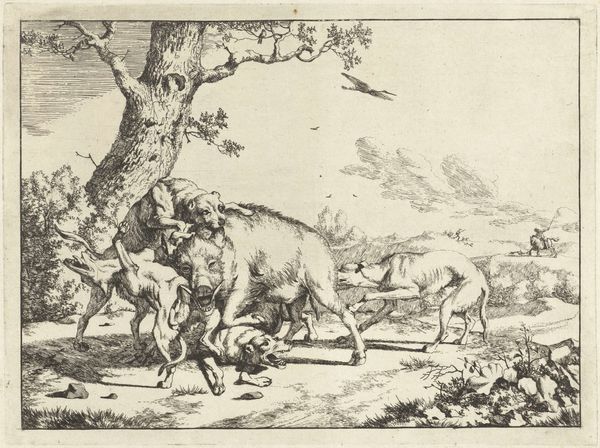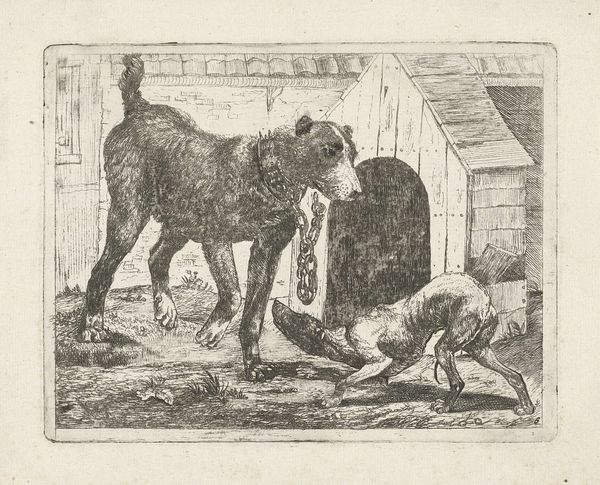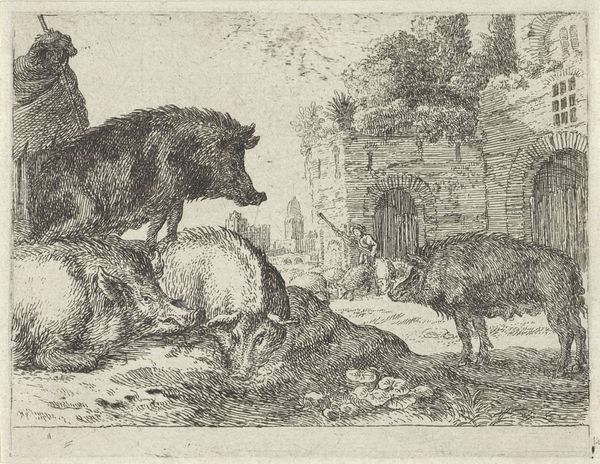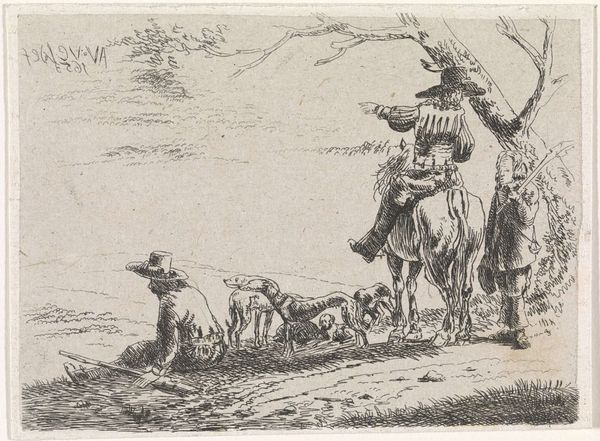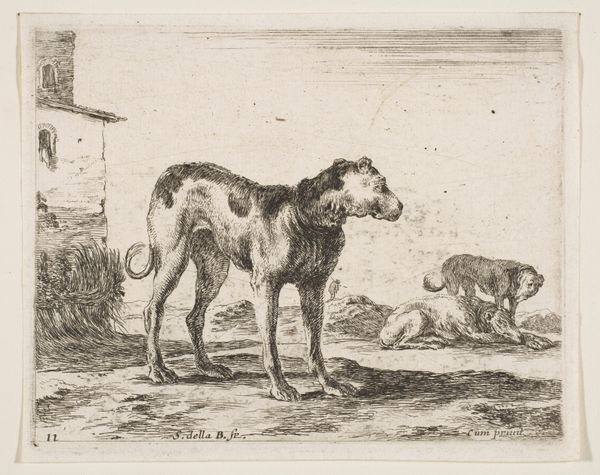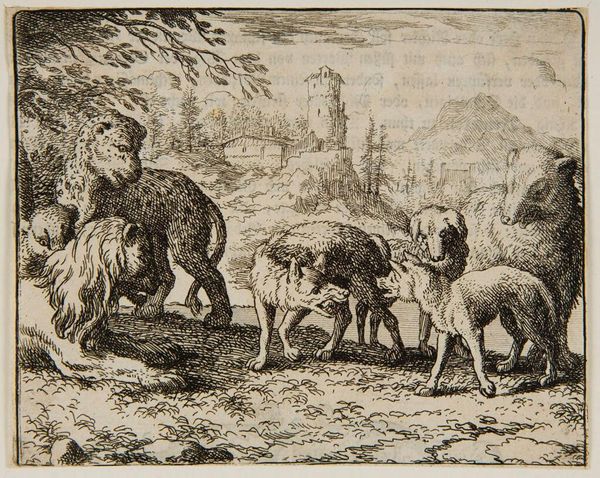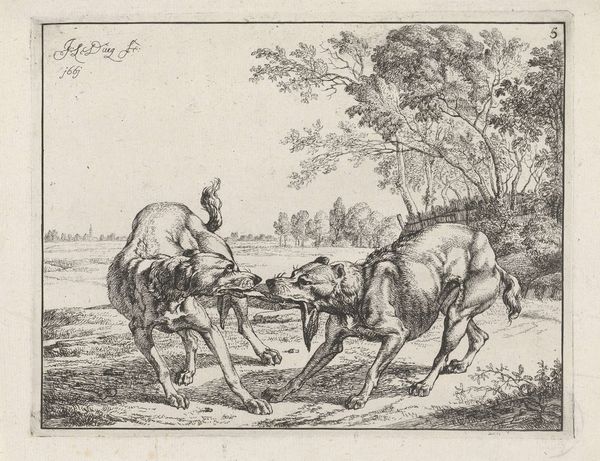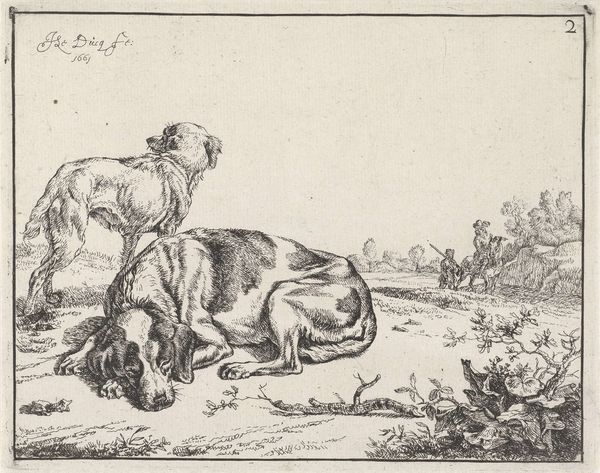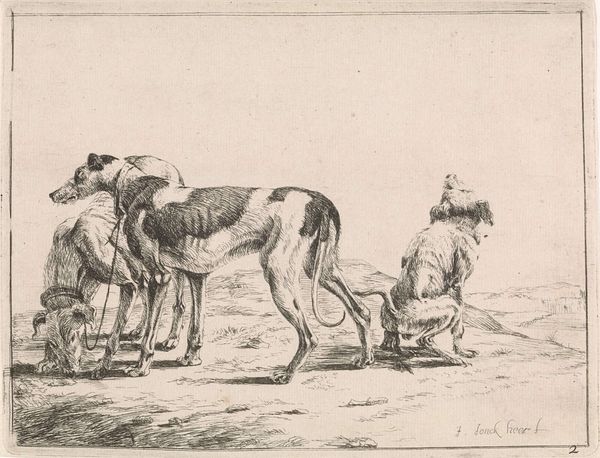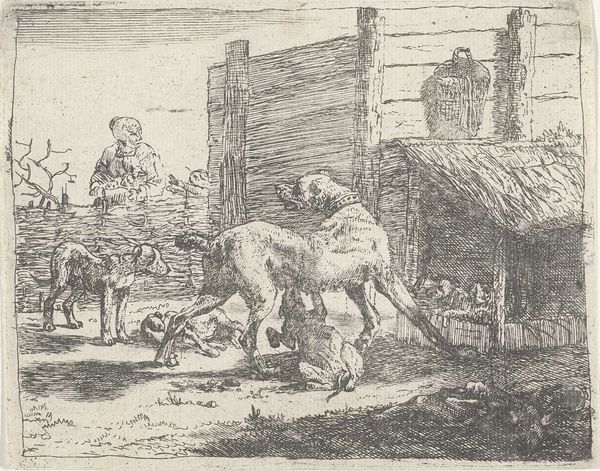
#
light pencil work
#
quirky sketch
#
pen sketch
#
pencil sketch
#
dog
#
old engraving style
#
personal sketchbook
#
sketchwork
#
pen-ink sketch
#
sketchbook drawing
#
pencil work
Dimensions: height 150 mm, width 187 mm
Copyright: Rijks Museum: Open Domain
"Jaloerse Hond," or "Jealous Dog," was etched in 1661 by Johan le Ducq, a Dutch artist working in the shadow of the Golden Age. This seemingly simple image of dogs fighting over a carcass reflects wider anxieties within Dutch society at the time. We see here the etching is more than just a depiction of animals, it is imbued with social commentary. The 17th-century Dutch Republic, despite its economic success, was rife with competition and social climbing. The struggle for limited resources, symbolized by the dead animal, mirrors the cutthroat nature of Dutch capitalism. The "jealous dog" embodies the relentless pursuit of wealth and status, at the expense of others. To truly understand this work, we need to consider the rich tradition of Dutch genre painting and emblem books. These resources provide insight into the cultural codes of the time. Through careful historical research, we can unlock the hidden meanings embedded within this seemingly simple image and appreciate its role as a mirror reflecting the complexities of Dutch society.
Comments
No comments
Be the first to comment and join the conversation on the ultimate creative platform.
